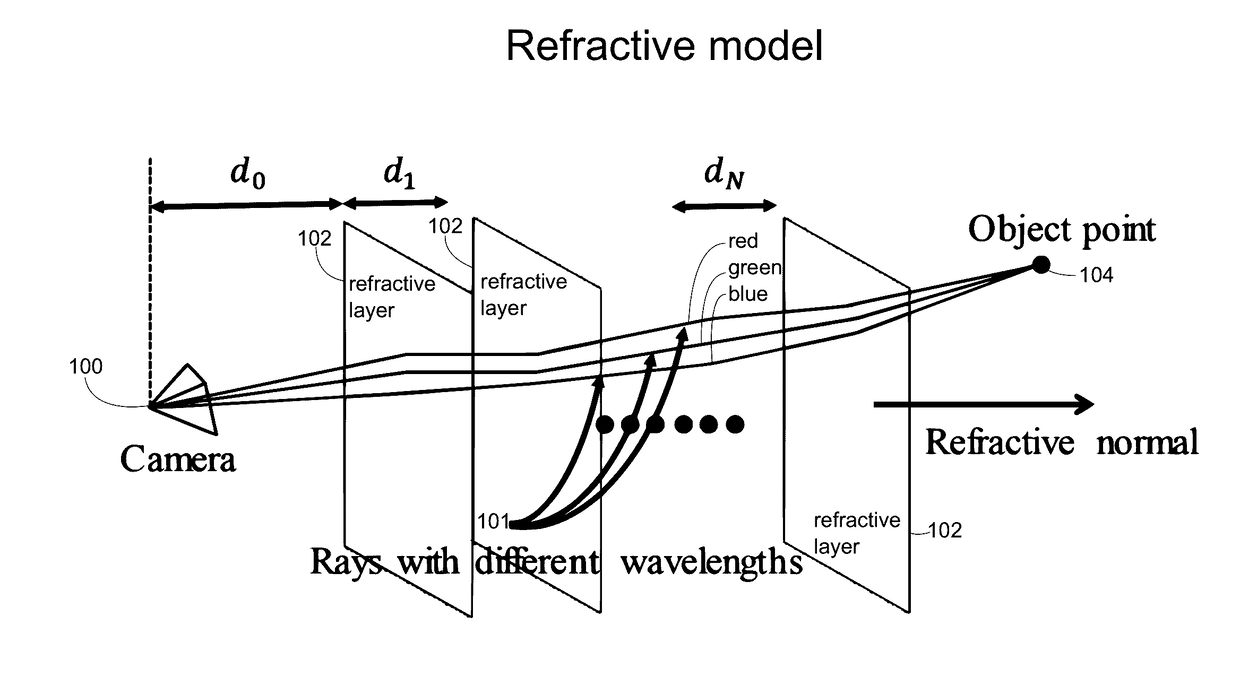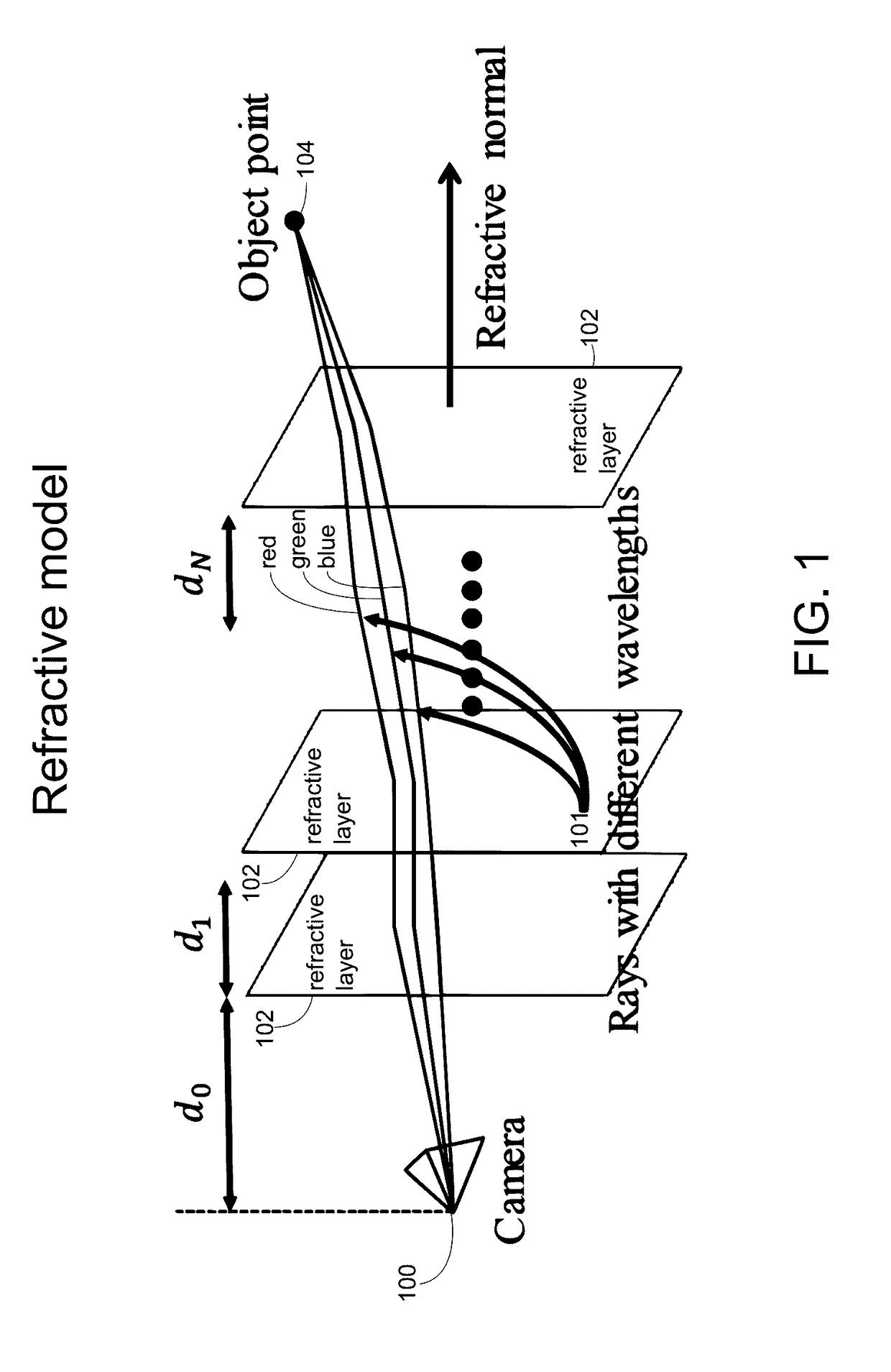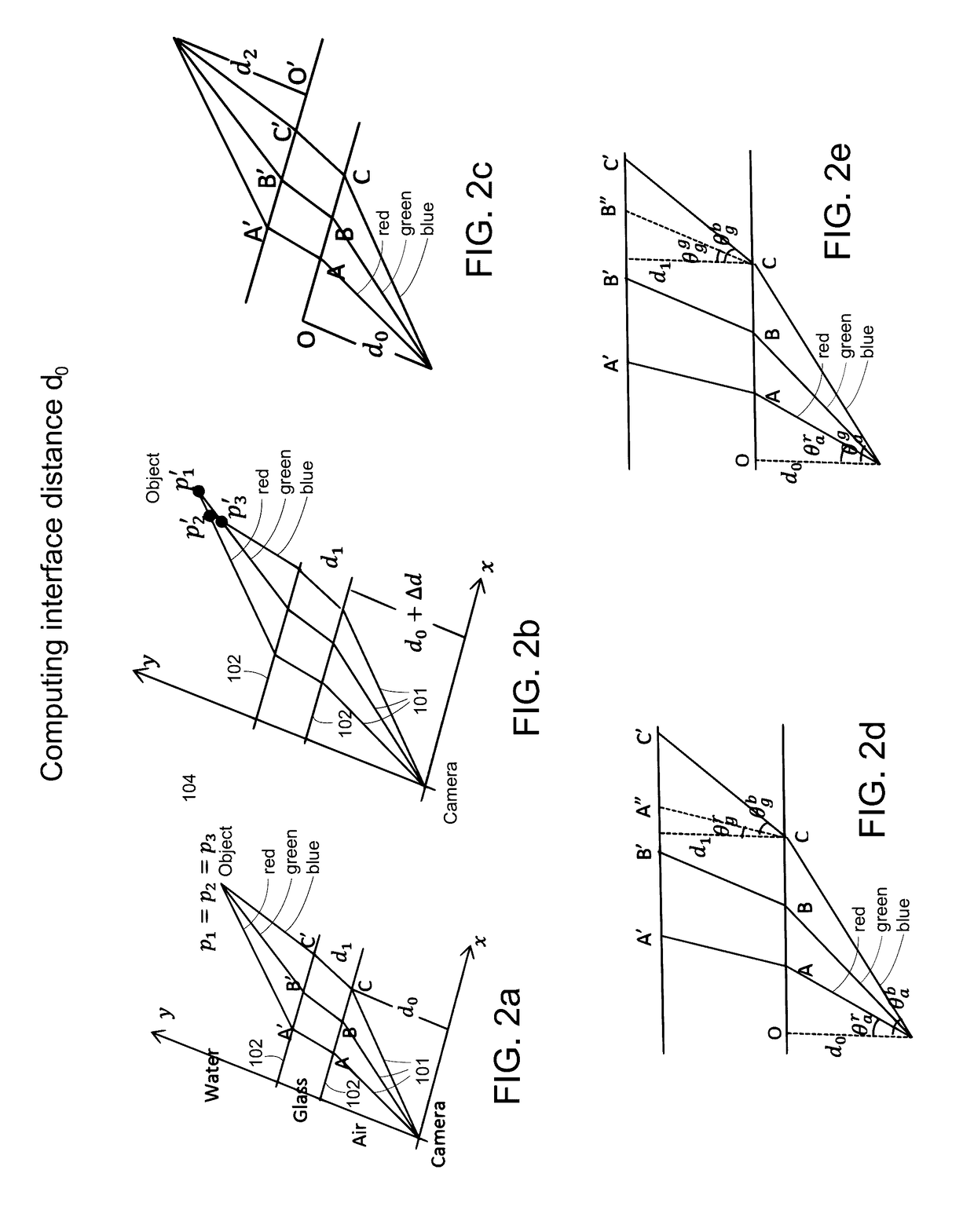Underwater 3D image reconstruction utilizing triple wavelength dispersion and camera system thereof
a 3d image and underwater camera technology, applied in underwater equipment, image data processing, waterborne vessels, etc., can solve the problems of underwater camera calibration that has not been addressed until recently, distortion in captured images, and underwater camera calibration remains a challenging problem
- Summary
- Abstract
- Description
- Claims
- Application Information
AI Technical Summary
Benefits of technology
Problems solved by technology
Method used
Image
Examples
Embodiment Construction
[0049]FIG. 1 shows the refraction model utilized according to an exemplary embodiment of the present invention. A pinhole perspective camera is viewing the object through multiple flat refractive layers where all layers are parallel to each other, which means that all layers have the same refractive interface normal n. The number of layers is N and each layer has a thickness of di. The distance from the camera center to the first refractive interface is denoted as the “interface distance”, d0. Assume that the object is able to emit three different wavelengths of light (red, green and blue), then the dispersion can be observed due to different refractive indices for different wavelengths. One goal in this embodiment is to compute both the refractive normal n and the interface distance d0.
[0050]This embodiment is directed at a specific refraction case which is a common and practical one. In particular, it is assumed that there are two refractions which are air→glass→water. This is a c...
PUM
 Login to View More
Login to View More Abstract
Description
Claims
Application Information
 Login to View More
Login to View More - R&D
- Intellectual Property
- Life Sciences
- Materials
- Tech Scout
- Unparalleled Data Quality
- Higher Quality Content
- 60% Fewer Hallucinations
Browse by: Latest US Patents, China's latest patents, Technical Efficacy Thesaurus, Application Domain, Technology Topic, Popular Technical Reports.
© 2025 PatSnap. All rights reserved.Legal|Privacy policy|Modern Slavery Act Transparency Statement|Sitemap|About US| Contact US: help@patsnap.com



